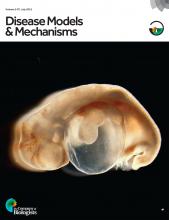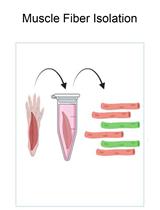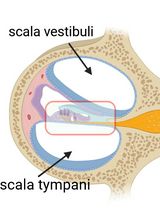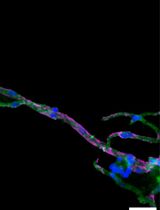- EN - English
- CN - 中文
Improved Oviduct Transfer Surgery for Genetically Modified Rat Production
用于转基因大鼠生产的改良输卵管移植手术
发布: 2017年08月20日第7卷第16期 DOI: 10.21769/BioProtoc.2503 浏览次数: 9883
评审: Jingli CaoAnonymous reviewer(s)
Abstract
Rat embryo transfer surgeries are becoming more common with targeted nucleases increasing the demand for rat models. This protocol details pre-surgical preparation, improved surgical techniques for placing embryos into the oviduct, and post-surgical care of rats to parturition. Direct application of mouse oviduct transfer protocols results in limited success in the rat. By combining techniques from several widely used protocols in the field, increased yield of live pups born to healthy dams is possible. This protocol is distinct from previously published protocols by the use of a modified anesthesia protocol (Smith et al., 2004), use of analgesia, the addition of peritoneal sutures (Filipiak and Saunders, 2006), incision location and number of transfers per animal (Krinke et al., 2000).
Keywords: Rat (大鼠)Background
The ability to reliably produce healthy pups after microinjection and embryo transfer surgery is critical to model creation and, in particular, the increased likelihood of creating multiple founder animals gives confidence in the phenotypes observed. Therefore, as birth rates were low relative to reported rates even with varied concentrations of injection solution, modifications were systematically made to the existing mouse embryo transfer protocol to better suit the rat.
Multiple publications describe transferring embryos to the oviducts of both horns of the bipartite uterus; however, this increases the length of time the animal is under anesthesia and requires either a midline incision and traversing the peritoneal cavity to reach the lateral reproductive tract, or creating two separate incisions (Krinke et al., 2000). These options are less than ideal since either will increase stress of the animal and thereby the likelihood that the pregnancy will be aborted. By creating a single lateral incision and administering analgesia both preoperatively and postoperatively the stress of the animal is minimized (Smith et al., 2004). The use of isoflurane over injectable anesthetic agents minimizes risk of toxicity (such as seen with tribromoethanol), injury from IP injection, and repeated dosing, all of which are associated with higher mortality rates following rodent surgery (Bernal et al., 2009).
The greatest improvements in litter number and size followed the addition of ampicillin and epinephrine to the procedure [62 born/298 transferred (20.8%) versus 91 born/248 transferred (36.7%) post addition of ampicillin and epinephrine; all projects]. Although the surgery is performed aseptically, ampicillin was shown as early as 1995 to optimize the number of pups born to rats (Waller, 1995) and use of epinephrine on the ovarian bursa reduced bleeding and thereby trauma to the animal, as well as reduced the length of time required to find the infundibulum. These modifications have been used individually in multiple reports; however, this is the first protocol to combine the most advantageous aspects of each protocol while refining procedures that may be detrimental (Krinke et al., 2000; Smith et al., 2004; Filipiak and Saunders, 2006).
Materials and Reagents
- Personal protective materials–hair net, gloves
- 4-0 black silk sutures (Kent Scientific, catalog number: INS701073 )
- 9 mm wound clips (BD, catalog number: 427631 )
- Kimwipes (KCWW, Kimberly-Clark, catalog number: 34155 )
- Insulin syringes (BD, catalog number: 329412 )
- Iodine swabs (PDI Healthcare, catalog number: S41350 )
- (Optional) Rodent mask diaphragms (Smiths Medical, Surgivet, catalog number: 32247B1 )
- Sterile surgical drape
- 500 ml filter system
- Fertilized one cell Sprague Dawley embryos (see Notes)
- 8-week old female Sprague Dawley recipient rats
- Vasectomized Sprague Dawley male rats
- Luteinizing hormone releasing hormone agonist (LHRHa) (Sigma-Aldrich, catalog number: L4513 )
- 70% ethanol
- Buprenorphine (Southern Anesthesia & Surgical, catalog number: 12496075705 )
- Carprofen (Zoetis Services, catalog number: 060062 )
- Ampicillin (Fisher Scientific, catalog number: BP1760-25 )
- 0.1% epinephrine (Acros Organics, catalog number: 204400010 )
- Sterile, nonmedicated ophthalmic ointment (Rugby Laboratories, catalog number: 301905 )
- Embryo tested water (Sigma-Aldrich, catalog number: W1503 )
- Sodium chloride (NaCl) (Sigma-Aldrich, catalog number: S5886 )
- Potassium chloride (KCl) (Sigma-Aldrich, catalog number: P9333 )
- Potassium phosphate monobasic (KH2PO4) (Sigma-Aldrich, catalog number: P9791 )
- Magnesium sulfate heptahydrate (MgSO4·7H2O) (Sigma-Aldrich, catalog number: M1880 )
- Glucose (Sigma-Aldrich, catalog number: 158968 )
- Penicillin (Sigma-Aldrich, catalog number: P7794 )
- Streptomycin (Sigma-Aldrich, catalog number: S1277 )
- Sodium bicarbonate (NaHCO3) (Sigma-Aldrich, catalog number: S5761 )
- Sodium pyruvate (Sigma-Aldrich, catalog number: P4562 )
- EDTA (Sigma-Aldrich, catalog number: 03609 )
- L-Glutamine (Sigma-Aldrich, catalog number: G8540 )
- Sodium lactate (Sigma-Aldrich, catalog number: L7900 )
- Calcium chloride dihydrate (CaCl2·2H2O) (Sigma-Aldrich, catalog number: C7902 )
- Bovine serum albumin (BSA) (Sigma-Aldrich, catalog number: A7906 )
- Phenol red (Sigma-Aldrich, catalog number: P0290 )
- Isoflurane (AMERISOURCE BERGEN, catalog number: 10103618 )
- LHRHa solution (see Recipes)
- KSOM medium (see Recipes) (Cold Spring Harbor, 2006)
Equipment
- Biosafety cabinet
- pH meter
- Mouth pipet (Fisher Scientific, catalog number: NC9048719 )
Manufacturer: BIOTECH, model: MP001Y. - Glass pipettes (Fisher Scientific, catalog number: 13-678-20C )
- Flame source to pull pipettes
- Personal protective equipment–clean lab coat
- 9 mm wound clip applier (BD, catalog number: 427630 )
- Microscope (Leica Microsystems, model: Leica S8 APO )
- Fine forceps (Fine Science Tools, catalog number: 11251-10 )
- Spring scissors (Roboz Surgical Instrument, catalog number: RS-5650 )
- Large scissors (Roboz Surgical Instrument, catalog number: RS-5910 )
- Grip forceps (Roboz Surgical Instrument, catalog number: RS-8100 )
- Micro clip (Roboz Surgical Instrument, catalog number: RS-5420 )
- Versi-Dry surface protectors (Thermo Fisher Scientific, Thermo ScientificTM, catalog number: 74000-00 )
- 37 °C warming plate (C & A Scientific, Premiere, catalog number: XH-2002 )
- Animal clippers (Oster, catalog number: 078005-301-003 )
- Bead sterilizer (CellPoint Scientific, catalog number: 5-1450 )
- Anesthesia machine (Smiths Medical, Surgivet, catalog number: WWV9000 )
- Rodent anesthesia circuit set (Smiths Medical, Surgivet, catalog number: V7103 )
- Large rubber bands
Procedure
文章信息
版权信息
© 2017 The Authors; exclusive licensee Bio-protocol LLC.
如何引用
Lambert, L. J., Johnson, L. W., Kennedy, D., Cadillac, J. and Kesterson, R. A. (2017). Improved Oviduct Transfer Surgery for Genetically Modified Rat Production. Bio-protocol 7(16): e2503. DOI: 10.21769/BioProtoc.2503.
分类
细胞生物学 > 细胞移植 > 胚胎移植
细胞生物学 > 组织分析 > 组织分离
您对这篇实验方法有问题吗?
在此处发布您的问题,我们将邀请本文作者来回答。同时,我们会将您的问题发布到Bio-protocol Exchange,以便寻求社区成员的帮助。
提问指南
+ 问题描述
写下详细的问题描述,包括所有有助于他人回答您问题的信息(例如实验过程、条件和相关图像等)。
Share
Bluesky
X
Copy link













